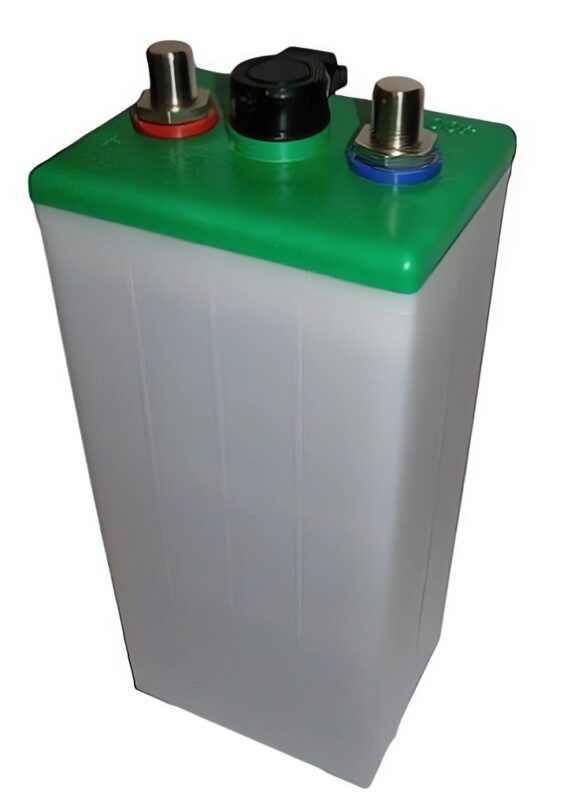AC/DC Power
Stationary batteries and their types
Stationary batteries are those used in fixed systems, known for their high storage capacity. Unlike other batteries such as automotive ones, they release energy in a prolonged and steady manner.
These batteries find applications in industrial, telecommunications, solar, and other systems, whether as primary sources or backups. Notably, they can be composed of 1, 3, or 6 cells at 2 Vdc each, depending on the required voltage.
For the latter, they are configured into what are called battery banks. We explain this in the Course on Sizing and Designing DC Power Systems for Telecommunications and Critical Systems that we offer
Now, let’s briefly describe the most commonly used types of stationary batteries, considering that this classification is based on their construction technology. Let’s delve into it!
Lead-acid batteries

These batteries are constructed with robust materials and thick plates, which make them highly resistant and durable through charge and discharge cycles.
They offer excellent autonomy as they are optimized to deliver energy reliably, with minimal degradation.
Currently, they are the most widely used in stationary battery applications for telecommunications energy systems, mainly due to their cost-effectiveness.
For more information, we invite you to read our upcoming posts on Open lead-acid batteries and Valve-regulated lead-acid batteries.
It’s worth noting that the battery technologies presented below are considerably more expensive than lead-acid batteries.
Flow battery technology

The electrolyte of these devices is stored in external tanks, which makes them quite bulky. However, this is offset by their durability and high scalability due to their modular design.
Lithium-ion batteries

This is one of the most innovative technologies, and its usage has become widespread. These batteries have high storage capacity; they require strict thermal control and energy management to prevent the risk of explosion, which is their major drawback.
They exhibit remarkable energy density and high efficiency.
Molten salt batteries

Unlike other battery technologies, these batteries operate at high temperatures. This allows them to offer a higher number of discharge and charge cycles, as well as enhanced energy density.
However, their technical implementation is more complex, and maintenance is critical and requires specialized expertise.
Iron-nickel batteries

The electrolyte is a combination of nickel and iron oxides with potassium hydroxide. This composition makes them highly durable and capable of enduring deep cycles of discharge and charge without significant damage.
They are well-suited for backing up systems in aggressive environments. However, they tend to be the most expensive within this category.
Selecting the appropriate battery depends on various factors, such as specific applications and performance requirements. However, as mentioned earlier, lead-acid technology remains the most widely used among stationary batteries due to its characteristics.
This is due to their excellent price-value-lifespan ratio. In our articles Open lead-acid batteries and Valve-regulated lead-acid batteries , you’ll discover the key characteristics of their types.
To delve deeper into the world of batteries, we encourage you to read the post titled Batteries and their fundamentals.
Additionally, don’t miss out on acquiring our sizing and design of dc power systems for telecommunications and critical systems course.
In this course, you will learn how to size and calculate a DC backup system with batteries. You can find the course content by clicking here.
We wouldn’t want to say goodbye without inviting you to visit the energydcac website. There, you’ll find a wealth of content about battery systems and AC/DC electricity in general. Don’t miss out on exploring them!
Image sources
- ecofener.com
- cicenergigune.com
- energydcac.com


Pingback: Sealed battery stationary lead-acid - Energy DC/AC